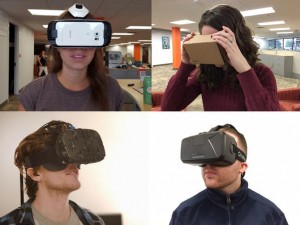Information Security has a new Twitter feed and other new content on their website. Follow us at @MiddInfosec on Twitter or visit our website at http://go.middlebury.edu/infosec
Mobile devices have become one of the primary ways that we communicate and interact with each other. Powerful computers now fit in our pockets and on our wrists, allowing us to bank, shop, view our medical history, work remotely, and communicate from virtually anywhere. With all this convenience comes added risk, so here are some tips to help secure your devices and protect your personal information.
- Password-protect your devices. Protect the data on your mobile device and enable encryption by enabling passwords, PINs, fingerprint scans, or other forms of authentication. On most current mobile operating systems you have the option to encrypt your data when you have a password turned on. Turn it on!
- Secure those devices and backup data. Make sure that you can remotely lock and/or wipe each mobile device. That also means you should back up your data on each device in case you need to use the remote wipe function. Services such as iCloud, OneDrive, and Google offer device location, wipe and backup services.
- Verify app permissions. Don’t forget to review which privacy-related permissions each application is requesting, before installing it. Be cautious of fake applications masquerading as legitimate programs by verifying that the application is from a reputable source, such as the Apple Apps Store, Microsoft’s Store, or Google’s Play Store. Occasionally, applications in the official stores can include malware. Read reviews and descriptions carefully. Only install applications that you need. Remove applications that you are no longer using.
- Update operating systems. Security fixes or patches for mobile devices’ operating systems are often included in these updates. Just like patching a computer, iOS, Android, and Windows Mobile all need to be patched and kept current.
- Be cautious of public Wi-Fi hotspots. When using your mobile device, watch for connections to public hotspots. Many mobile devices will automatically connect to hotspots and prioritize data transmission over Wi-Fi by default. Verify that your settings require manually selecting hotspots if possible. Working with sensitive data while connected to a public hotspot could lead to unintended data exposure. Always ensure that you are using a secure connection.
- Always apply safe computing practices. Whether traveling with a mobile device, a laptop, or sitting in a hotel business center, you always want to use safe computing practices to protect your data. See this link for more tips: http://www.middlebury.edu/offices/technology/infosec/education/training/SafeComputing.


